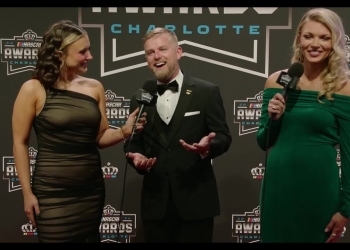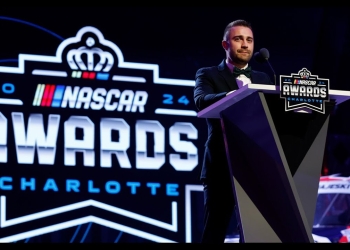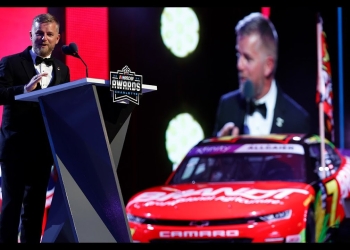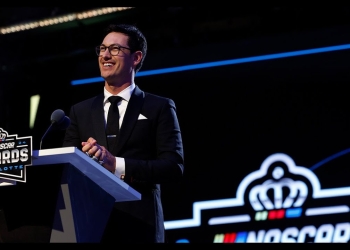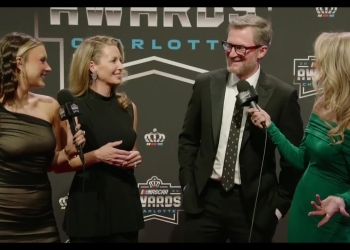Shane van Gisbergen's Nail-Biting Duel at Watkins Glen: Echoes of Marcos Ambrose
The NASCAR Cup Series race at Watkins Glen International delivered a thrilling conclusion that harkened back to one of the most memorable finishes in the track's storied history. Shane van Gisbergen, the New Zealand-born Supercars champion making waves in his NASCAR foray, found himself embroiled in a last-lap battle with Chris Buescher that bore striking similarities to the iconic 2012 duel between Marcos Ambrose and Brad Keselowski.A Clash of Titans on the Final Lap
As the white flag waved over the serpentine circuit, van Gisbergen was hot on the heels of Buescher, mirroring the intensity of Ambrose's pursuit of Keselowski over a decade ago. The parallels were uncanny: • Both featured an Antipodean road course ace chasing down an American oval specialist • The battles unfolded in the closing stages of the race, with everything on the line • High-stakes maneuvering through the track's notorious "bus stop" chicane played a crucial role Van Gisbergen, showcasing the road racing prowess that has made him a legend in Australia's Supercars series, pushed Buescher to the limit. The Kiwi's aggressive yet calculated approach through the final corners was reminiscent of Ambrose's audacious moves that secured his victory in 2012.The Art of the Chase: SVG's Tactical Brilliance
"I was trying everything I could to get by him," van Gisbergen recounted, his voice still tinged with adrenaline. "Chris drove a hell of a race, and I just couldn't find that last bit of grip to make the pass stick."Van Gisbergen's pursuit was a masterclass in road course racing strategy: 1. Maintaining pressure through high-speed sections 2. Looking for opportunities in heavy braking zones 3. Setting up potential passes by varying his line through corners 4. Attempting to force errors by staying in Buescher's mirrors The tension was palpable as van Gisbergen sought to replicate Ambrose's last-corner heroics. However, Buescher's staunch defense proved impenetrable, showcasing the evolution of NASCAR's road course racing acumen since Ambrose's era.
Click here to preview your posts with PRO themes ››
Technical Mastery Meets Raw Talent
The duel between van Gisbergen and Buescher exemplified the fusion of technical prowess and innate racing instinct. SVG's car control was nothing short of sublime — a testament to his diverse racing background. His ability to modulate throttle inputs while managing tire wear demonstrated a level of finesse that left even seasoned observers in awe. Buescher, for his part, displayed remarkable composure under pressure. His defensive driving was a clinic in positioning and track awareness, effectively neutralizing van Gisbergen's attacks without compromising his own pace.The Echoes of History
The similarities to the Ambrose-Keselowski battle were not lost on longtime NASCAR aficionados. Both contests showcased the unique challenges of road course racing, where the delicate balance between aggression and precision can make or break a race in the final moments. Ambrose's victory in 2012 remains etched in NASCAR lore, a moment when the Australian's road racing expertise triumphed over oval-track dominance. Van Gisbergen's valiant effort, while falling just short of victory, served as a poignant reminder of the international talent that continues to be drawn to NASCAR's competitive arena.The Implications for NASCAR's Global Appeal
Van Gisbergen's performance at Watkins Glen — following his stunning victory at Chicago — underscores NASCAR's growing international flavor. The Kiwi's success is likely to inspire more global talents to test their mettle in stock car racing, potentially reshaping the sport's competitive landscape. This influx of international drivers brings with it a diverse set of skills and perspectives, enriching the NASCAR experience for fans and competitors alike. The fusion of different racing disciplines — from Supercars to Formula 1 to sports cars — creates a melting pot of talent that elevates the overall level of competition.Looking Ahead: The Road Course Renaissance
As NASCAR continues to embrace road course racing, performances like van Gisbergen's serve as a catalyst for evolution within the sport. Teams and drivers are increasingly prioritizing road course proficiency, recognizing its growing importance in the championship equation.Click here to preview your posts with PRO themes ››
The future of NASCAR road racing looks bright, with emerging talents like van Gisbergen pushing established stars to new heights. This competitive pressure is likely to drive innovation in car setups, driving techniques, and race strategies, ensuring that road course events remain some of the most anticipated on the NASCAR calendar.


